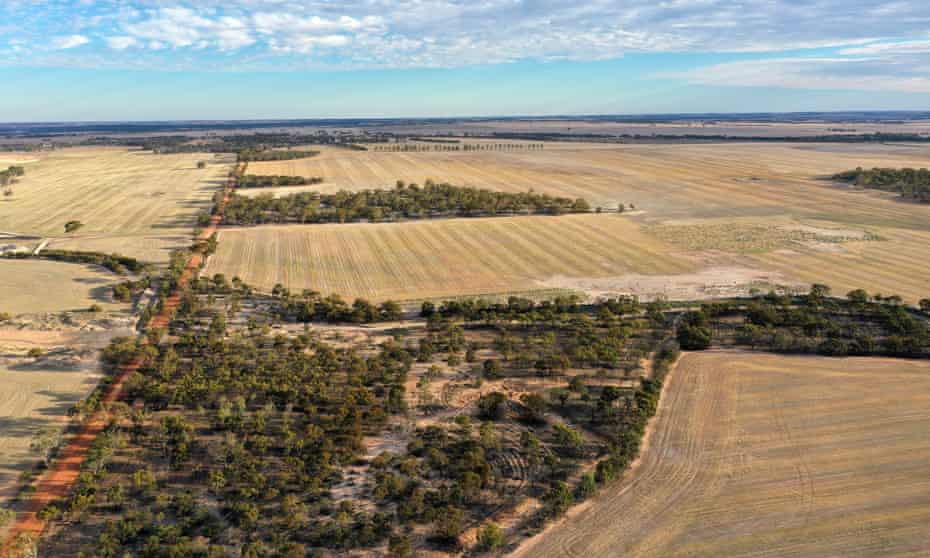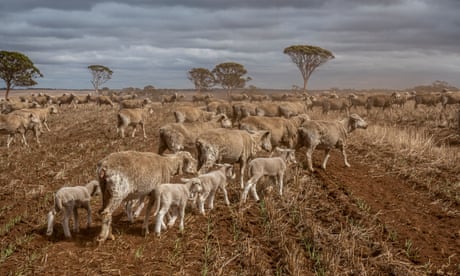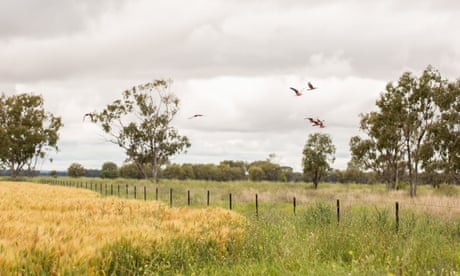Extract from The Guardian
We must be realistic about how much soil carbon sequestration can achieve in the fight against the climate crisis
- Sign up for the Rural Network email newsletter
- Join the Rural Network group on Facebook to be part of the community

‘The reality of soil carbon is that it is highly variable, hard to measure, hard to shift and easy to lose.’
Voters and big business want climate change action. But on the eve of an election, it’s a game politician who tells the voters to fly less, drive less, use less internet, watch less television, waste less food and turn the lights off.
Nor is it popular to slam shut the coal industry in places like New South Wales and Queensland, or impose enormous regulatory costs on publicly owned companies whose investors vote.
It’s less politically risky to expect the farming community to deliver this wishlist of climate change mitigation and clean and green food. After all, farmers are only 2% of the population but occupy 55% of the Australian land mass. Never mind that it’s a tough ask and a vulnerable position to be in with 98% of voters riding on your future.
With the emphasis on carbon sequestration, big business can buy carbon credits and tick that off the risk register. Green consumers can clear their conscience and sleep better at night by ordering carbon “neutral” produce. But there are three problems with that scenario.
The first and biggest problem is technical.
Our soils can only accumulate so much carbon. Not all soils are equal and not all farming systems can store carbon at the same rate. In Victoria alone, soils range from sands with soil organic carbon (SOC) of about 0.5% to deep clays with SOC in the range of 1 to 2% or greater.
Across the country, the bulk of our rainfed soils managed as broadacre agriculture have a sequestration limit of less than 4%. Dairy pastures under irrigation have recorded SOC up to 14%, but these soils represent a tiny portion of the country.
Soil carbon sequestration is governed firstly by soil type, secondly by rainfall and temperature, and finally by management techniques.
Management systems that sequester high levels of carbon in one environment may not have the same effect elsewhere. Essentially, you can’t make a silk purse out of a sow’s ear. You can’t turn desert sand into peat moss.
The second problem is commercial. Farmers and their communities need to feed themselves and remain profitable.
The good news is that farming techniques that improve SOC also improve productivity and long term profitability. Maintaining soil cover, reducing tillage and growing good pastures and crops all contribute to building SOC.

Around a quarter of farmers are returning double the average profit, so there is plenty of room to improve profitability across the country without compromising sustainability. Of course, there is more to be done, and the mainstream farming community has the will to do more.
Farming communities don’t require convincing about global warming. Rainfall patterns have shifted, it’s hotter, frosts are more frequent at critical times, and the variability between seasons is like a rollercoaster. It’s as exhausting and confusing as it sounds. Farmers are becoming astute risk managers out of necessity.
As for soil carbon payments contributing to farm profitability, gains from soil carbon payments of $400m across the industry by 2050 sound great. But they are a tiny proportion (0.3%) of total output conservatively modelled at $131bn by 2050 according to the University of Western Australia economist David Pannell.
The third problem is the human aspect.
Farming is an uncertain game and uncertainty is hard on the head and the heart. On top of trying to make money, stay well and leave a legacy for the next generation, farmers are expected to store carbon so politicians, directors, shareholders and consumers can sleep better at night.
An extra 0.3% in carbon payments doesn’t seem like much when one has to wait 25 years to get the benefit, if in fact there is a benefit after all.

These contracts are not enticing for farmers when soil carbon is hard to gain and easy to lose. The prospect of signing up for 25 years – when the starting point is hard to measure, and the climate conditions that largely determine the outcome are completely unknown – seems like a risky bet.
That doesn’t mean farmers are ignoring the challenge. The innovators are already tracking their greenhouse gas consumption and aiming for net zero emissions, but it’s not a simple task. The reality of soil carbon is that it is highly variable, hard to measure, hard to shift and easy to lose.
Agriculture is in the political hot seat this election. This time, it’s not what the government and society needs to do for farming; it’s what farming is expected to do for society.
The bottom line is, out in the landscapes beyond back yard veggie patches, farming communities can’t turn sand into compost. It’s time to get real about the expectations of carbon sequestration.
We need to reduce the greenhouse gas emissions produced in the first place, to really prevent global warming from being any greater than 1.5C.
If we are to have any chance of winning the war against global warming, perhaps it’s time to look beyond the farmyards to reducing emissions in both the big industrial back yards and the suburban ones, as well as agriculture.
Dr Kate Burke is an agricultural scientist with a PhD in agronomy and plant breeding, working as an agri-strategist in Echuca.
Join the Rural Network group on Facebook to be part of the community
No comments:
Post a Comment